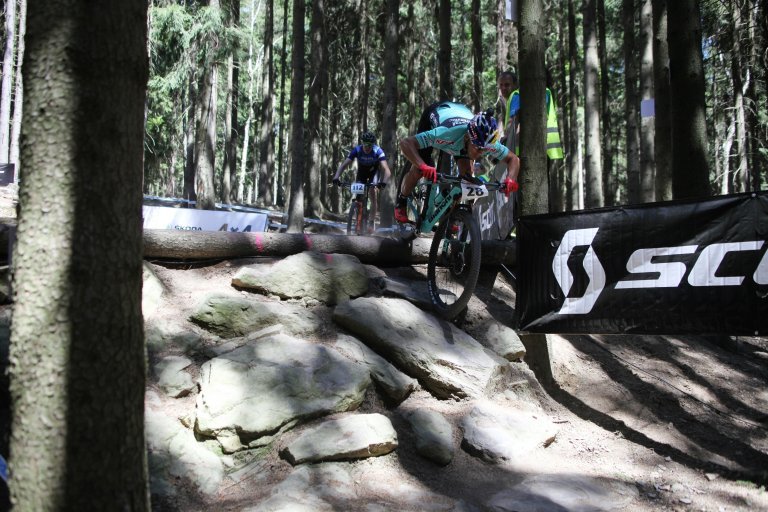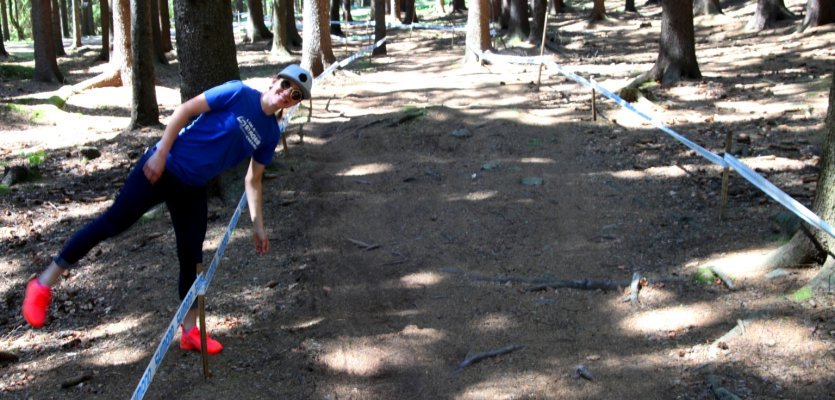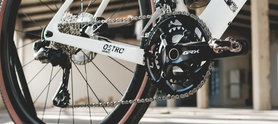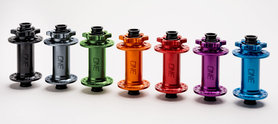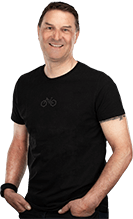
Finding the ideal line - Track walk at the MTB World Cup in Nové Mesto
Our XC MTB World Cup rider Theresia shares with you her secrets about choosing the ideal line on difficult race courses.
The Cross Country MTB World Cup in Nové Město, Czech Republic is renowned for its challenging course. Technical up- and downhill sections, rock gardens and loose surfaces - this track has it all. In order to optimize my performance in races like this, it’s of utmost importance to find the ideal line. Here I will tell you how I do this and what an ideal line is for me as a rider in the XC MTB World Cup.
How to find the ideal line?
- To do so, I begin with walking the track to inspect and memorize difficult sections. I see things being on foot, that I would have missed while being on the bike. A lot of times, more than one line is possible. I also try to take in the general conditions like steepness, dangerous rocks and roots, loose gravel or muddy sections at this moment.
- Then I get on my mountain bike and start riding the course slowly. The perspective from the saddle is drastically different from being on foot. A lot of the lines are discarded during that first inspection ride. Difficulties appear that I did not see on foot. This initial impression is very important. A line has to have rhythm for me. It needs to have the most flow possible.
- After the walk and the ride, it’s important to compare the tested lines that have not been discarded. Which one is the fastest? Which one makes me feels the safest. Safety and confidence are very important as one should never be scared on the bike. In addition, one does get tired during a race. Ask yourself if you can ride the same line in the last lap after having exhausted your strength. Sometimes less risk is better.
Mitas Choice
So much for the theory, let’s look a concrete examples. Mitas Choice is the longest rock garden section at the Nové Město World Cup.
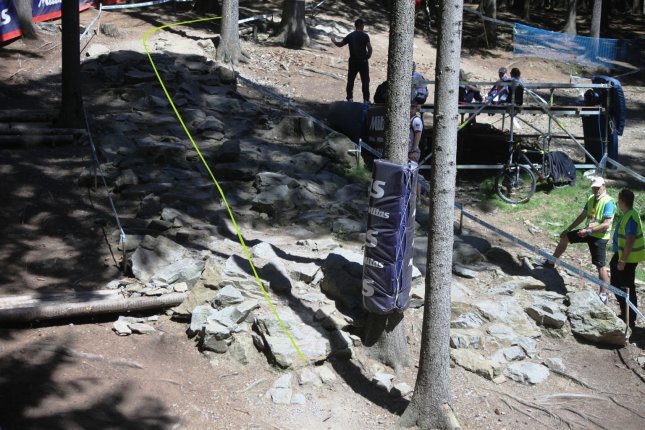
My line at the section Mitas Choice.
When doing the track walk, I identified more than one possible line. I ended up choosing a very direct line, which was rough and fast and let me keep my flow while still making me feel secure. During the race, I was able to ride this line at every lap and I had a lot of fun doing it.
During the training on the course, I had ridden Mitas choice a record 10 times. This is something I recommend to anybody.
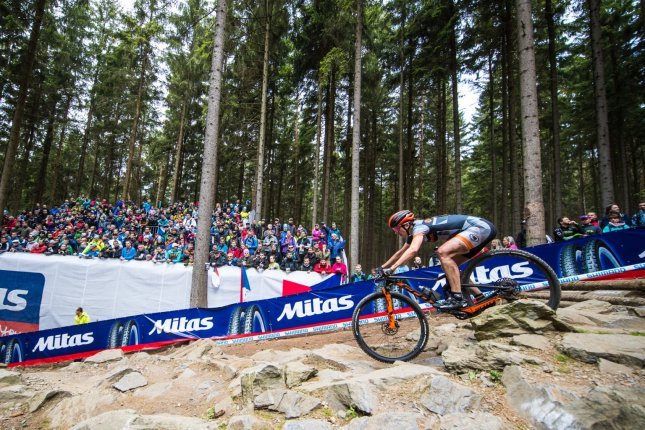
During the race, the time invested in the track walk pays off.
You start getting the hang of gnarly spots and you will train your skills while doing so. After a few tries, you develop routines, which let you focus on other things in the race. In the case of Mitas choice, my line wasn’t the one with the least obstacles, but it was the fastest line for me.
How to make your line choice?
In a rock garden like Mitas choice or Kodiaq Rock ‘n’ Roll, another section on the Nové Město World Cup course, I pay special attention to finding lines without big, jagged rocks or roots sticking out. These features would take the flow and rhythm away from me.
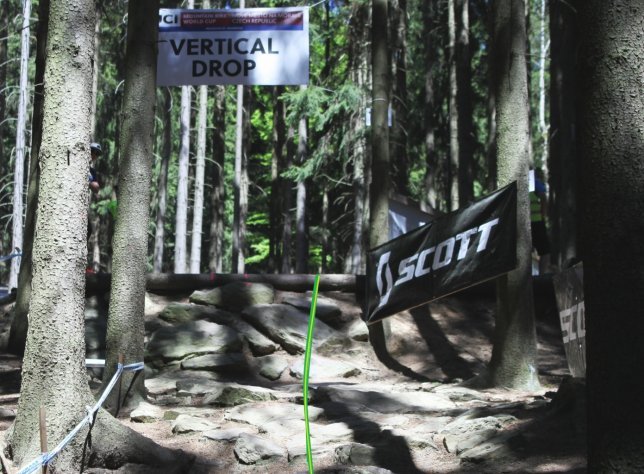
The right line choice takes the difficulty out of tricky sections.
Another thing to do, is observe other riders during the track walk. At races, don’t hesitate to wait until the big shots make their appearance during practice runs. In Nové Město, I was lucky enough to have had current world champion Nino Schurter training at the same time.
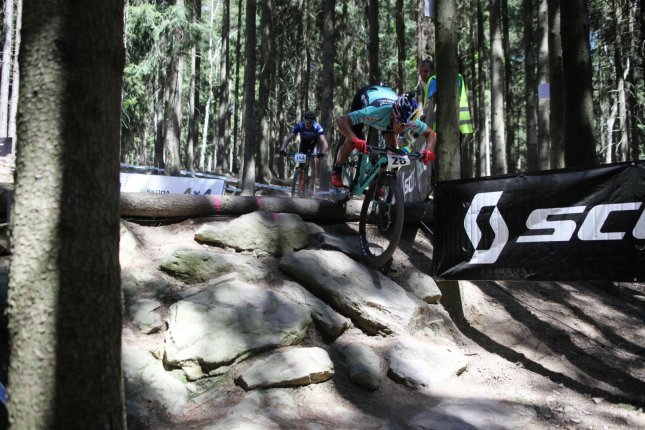
I copied Marco Fontana’s line at the Vertical Drop section.
. You do not have to be at a World Cup though, watching other riders clear obstacles is something you can do at any race. At the Vertical Drop, another key section of the course, I chose the safest line as I did not want to risk a crash. I had seen Marco Fontana, another pro rider, do it earlier and voted to do likewise.
Is the direct line always the fastest?
Uphill and downhill, you have to look at every feature of the difficult sections. Obviously, the direct line is the shortest distance between two points, but often it is also impossible to navigate and usually not the fastest option.
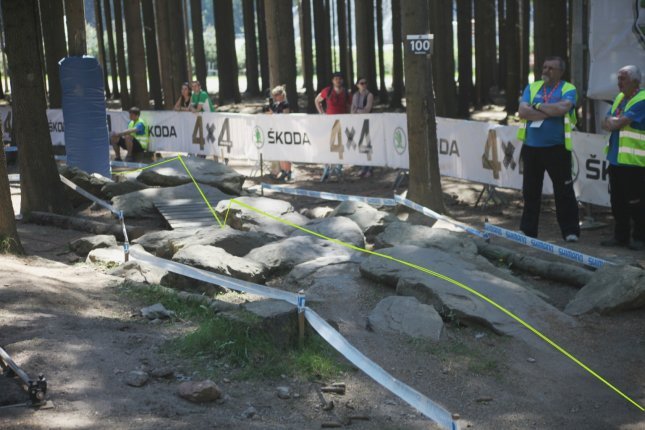
Kodiaq Rock ‘n’ Roll
Especially when going uphill, it’s so important to keep yourself and the bike moving fluidly to maintain your cadence. Therefore you should opt for longer lines that circle around large obstacles.
On descents like the above mentioned Kodiaq Rock ‘n’ Roll, the key was to choose a line that was faster and would let me roll through a middle section rather than having to pedal again. In curvy sections with lots of turns, it’s important to maintain the flow and reduce braking. Acceleration costs precious energy. Always try to take the most amount of speed with you.
When do I jump?
Be it a large root or lots of little boulders, no matter the obstacle, it makes sense to jump when it contributes to the flow of your ride. Granted, it takes the necessary skills to bunny hop and the skilled eye to identify little natural ramps to launch off. So practice first, before you jump in difficult sections. The rule of thumb is simple though, if it benefits your ride more to jump and take to the air than maintaining traction on the ground, then do it!
Final thoughts on the ideal line choice
The ideal line should build your confidence, be fun and of course fast. It’s very important that you are not scared of the course or sections of the course you ride and race on. A lot of times, accidents happen because the mindset is wrong. Only ride what you feel 100% confident with and remember that during a race, your strength and focus fade over time.
The track walk and practice sessions will help you build the necessary confidence to choose the ideal line and maintain your flow and rhythm, be it up- or downhill.

